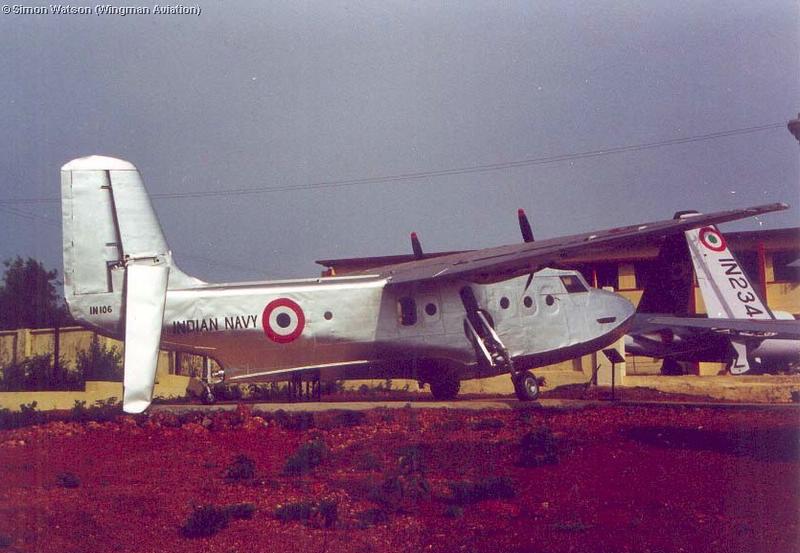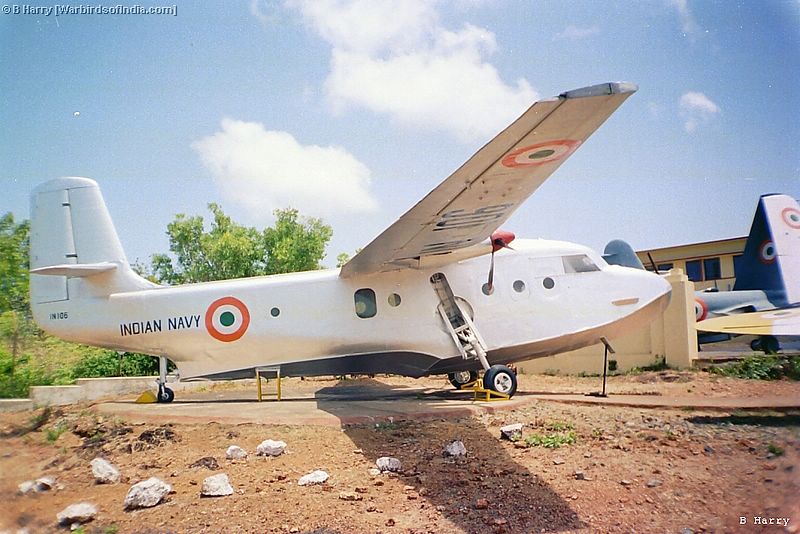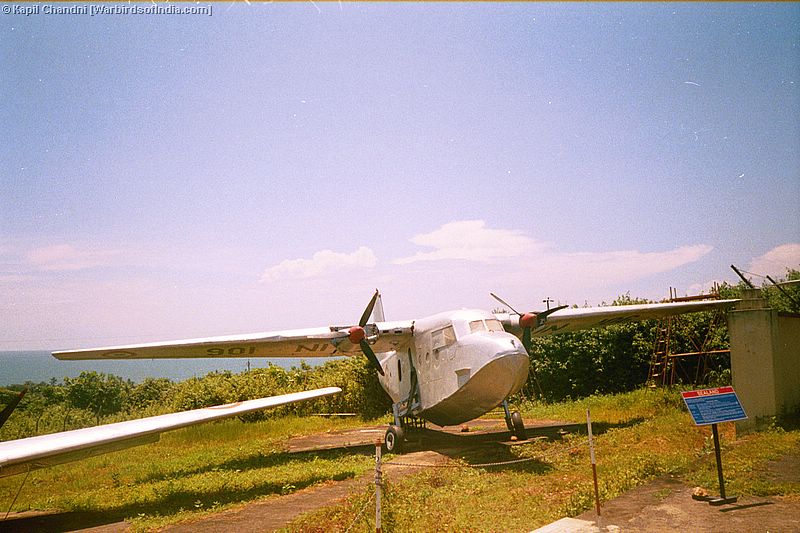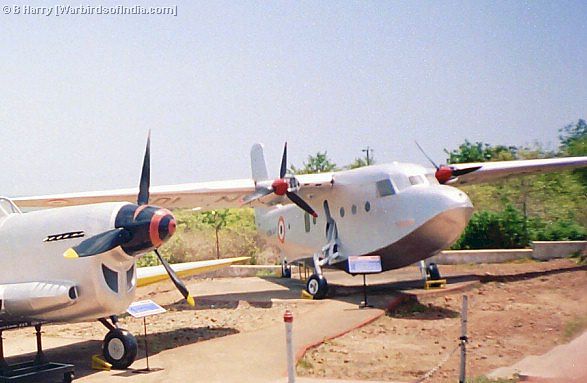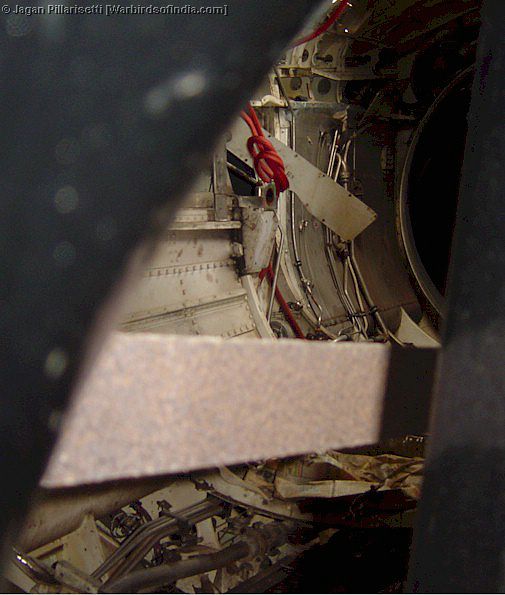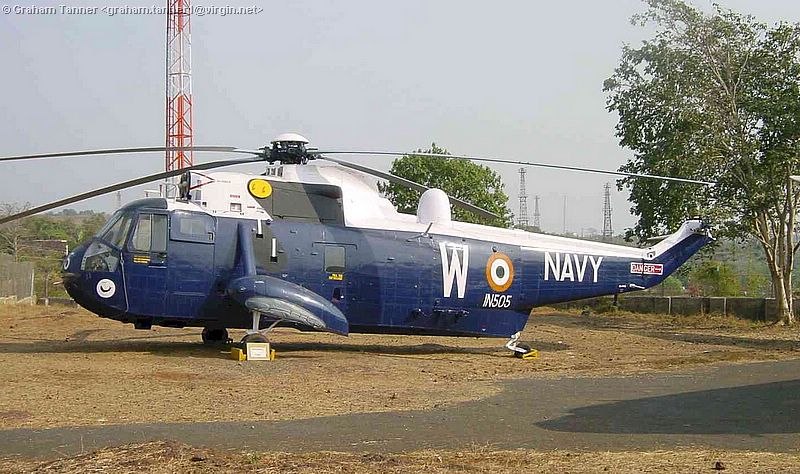The Shorts Sealand has a special place in the heart of Indian Naval Aviation. The type was the first aircraft to be inducted after the establishment of the Directorate of Naval Aviation and training of Indian Naval Aviators. An order for ten of these amphibians was placed in 1952.
| Shorts Sealand INS-105 banks steeply on a maritime patrol during its service days in the Indian Navy |
The first Sealand INS-101 was handed over on 13 Jan 53 . The aircraft arrived in due course of time by February . The last of the Sealands arrived in Oct 53. The FRU, or the Fleet Requirements Unit was commissioned on 11 Mar 53 on the Sealand under the command of Lt Cdr YN Singh. The FRU used to operated from Cochin’s airfield at Willingdon Island, then known as INS Vendurthy II which was soon rechristened as INS Garuda.
The Sealand was in service for ten years until 1963, when it was phased out as more and more new aircraft were inducted in service. It is believed atleast one Sealand was lost in an accident during the period. The aircraft was phased out in 1965, after just over 12 years of service.
Today a lone Sealand IN-106 survives and is on display at the Naval Aviation Museum. This Sealand was first noted on display at the Nehru Bal Bhavan in Trivandrum, Kerala by Sree Kumar as far back as 1973. According to Capt Gireesh Kumar, the Sealand was moved from its Bal Bhavan location in the late 70s.
Where the aircraft was in the intervening period of the 80s and the 90s till the NAM was established is a mystery – but one clue remains in a photograph published in Meatball magazine – the Naval Aviators Journal. The photograph shows a Sealand at a ‘Naval Aircraft Dump’ at an identified place. The article accompanying the piece laments the lack of a Naval Aviation Museum. A plaque at the museum gives another clue. It mentions that the Sealand was restored by a team from NIAT. So was it lying at NIAT all the time?
The team consisting of Lt Cdr D Bansal, Lt R Saini and Lt V Jain had done good work on the Sea Land. The aircraft in the current stage looks externally complete , but the look has been achieved at some expense. The two piston engines have been removed and in their place a couple of fake cowlings fixed with propellers in place.
There are two De Havilland Gypsy Queen inverted inline piston engines on display in the engine enclosure nearby. One of the engines still has the firewall attached along with the engine bearers. The other engine does not have the firewall nor the engine bearers. But both are essentially complete and look in good condition. Do they belong to the Sealand? We wouldn’t know because they could well have been from the DH Dove on display.
The Sealand features a retractable undercarriage that retracts into the Hull. The original undercarriage is still there, but it is badly twisted out of shape. The restoration team seems to have fashioned two ‘crutches’ to hold the undercarriage from collapsing. While the measure worked, the tyres pointing in different directions gives a feeling of helplessness thrust on the aircraft. The Sealand also does not have its wingtip mounted floats. These probably getting lost somewhere in the corridors of time.
All these are minor distractions. However the main damper on the aircraft’s appearance are the lack of elevators in the tail empennage. At one point of time, the starboard horizontal fin in the empennage had broken off and bent down. A photo of the damaged aircraft appeared in the Goa Museum feature in Flypast Magazine April 1999 issue.
 |
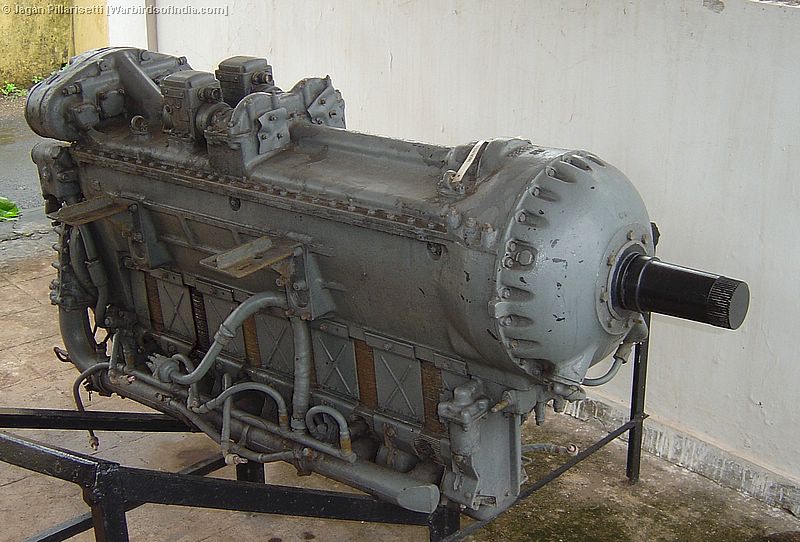 |
| The two Gypsy Queen inverted inline piston engines on display nearby. The engine on the left still retains its bearers and firewall. These engines could either be from the Sealand or from the Dove. | |
Its highly possible that the restoration done was a speedy affair to meet the opening deadlines of the Museum. But since we have that event behind us, it would be worthwhile to revisit the aircraft again, build two respectable looking engine cowlings, two fake floats , build the elevators in the tail empennage and prop up the undercarriage nicely.
Overall it is much appreciated that an example of the pioneer aircraft of the Indian Navy’s Aviation wing has survived today and has been restored. It is hoped that sometime in the future, the Navy will once again invest some time and effort to do the additional things required to ensure a more complete aircraft. After all, this is said to be one of the only three surviving Sealands in the World!

